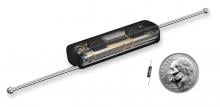Konica Minolta Healthcare Americas Inc., announced its KDR Advanced U-Arm and KDR Primary Digital Radiography System have been certified in California to withstand earthquakes, as part of the state’s Hospital Facilities Seismic Safety Act. The certification provided by the Office of Statewide Health Planning and Development (OSHPD) was awarded after both systems underwent and passed rigorous testing, including a shake test. With the OSHPD Seismic Certification, the KDR AU and KDR Primary can now be installed in any facility that requires this type of certification.Konica Minolta Healthcare Americas Inc., announced its KDR Advanced U-Arm and KDR Primary Digital Radiography System have been certified in California to withstand earthquakes, as part of the state’s Hospital Facilities Seismic Safety Act. The certification provided by the Office of Statewide Health Planning and Development (OSHPD) was awarded after both systems underwent and passed rigorous testing, including a shake test. With the OSHPD Seismic Certification, the KDR AU and KDR Primary can now be installed in any facility that requires this type of certification.



